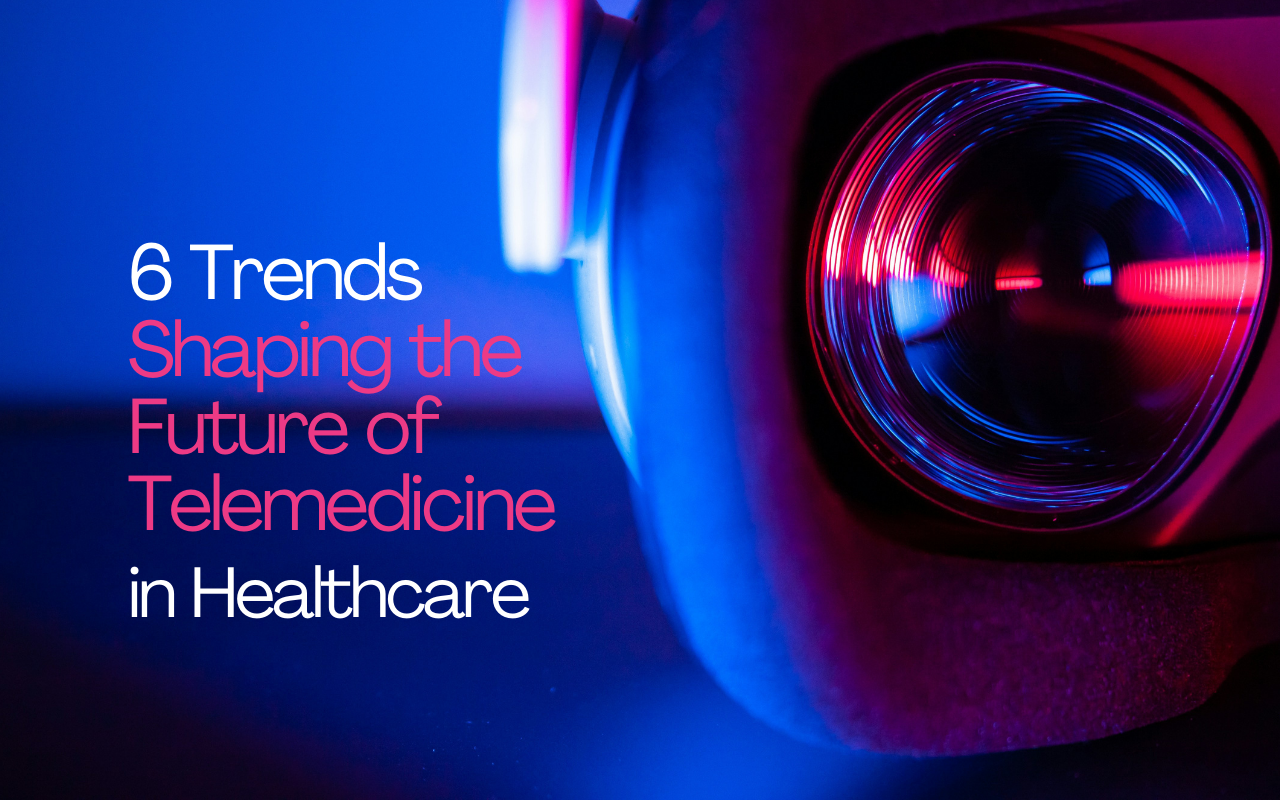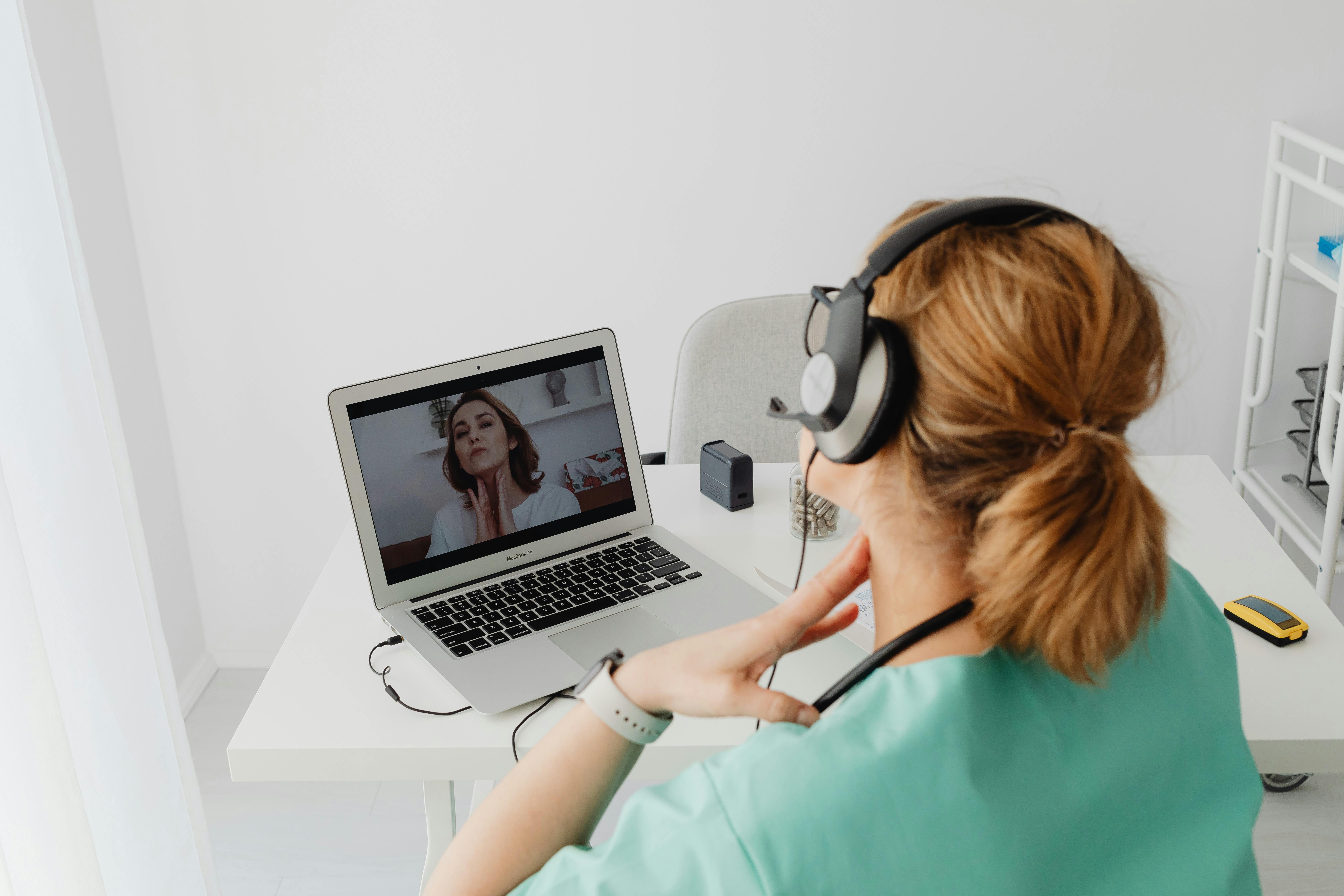
6 Trends Shaping the Future of Telemedicine in Healthcare
According to a report, the global telehealth and telemedicine market is poised to reach $285.7 billion by 2028. Advanced technologies, increasing demand for mental health services, and cost-effective medical solutions drive its upward trend.
The integration of chatbots and other novel technologies and the demand for enhanced healthcare services also propel its growth. Now, what are the trends shaping the future of telemedicine? Here are six of them.
What is telemedicine?

Telemedicine is the remote delivery of medical services wherein patients and doctors meet in virtual settings through telecommunication technologies, such as email, wireless tools, Smartphones, and video conferencing. It allows medical information transmission from one location to another, improves healthcare access, and reduces treatment costs.
6 Key Trends Shaping the Future of Telemedicine in Healthcare
The following trends shape the future of healthcare delivery and allow us to re-imagine healthcare like never before.
1. Integration of Artificial Intelligence (AI) and Machine Learning (ML)
AI and ML automate multiple medical activities and improve the quality of telemedicine in several ways, enabling remote patient monitoring, improving diagnostic accuracy, predicting patient outcomes, providing medical consulting services, and analyzing medical images.
For instance, AI simulates our intelligence so it can perform complex tasks. It can enhance diagnostic accuracy for a use case because its algorithms can analyze medical images, even outperforming humans in detecting early signs of a disease.
In addition, AI can automate specific administrative tasks, enhancing resource allocation, saving time for healthcare professionals, and reducing patient wait times.
Meanwhile, machine learning learns data and makes predictions. In the real world, ML can aid in personalizing treatment plans. How? It can analyze vast amounts of data; thus, it can tailor a treatment plan based on a patient's health profile, optimizing therapy and medication choices.
2. Use of Electronic Health Records (EHRs)
An electronic health record is a software or computer system large hospitals and healthcare organizations use to manage patient records, including demographics, medications, laboratory data, immunizations, and medical history.
It allows automatic storage and maintenance of patient data. This system saves the time and effort of healthcare providers who can quickly access a patient’s medical history to deliver treatment.
EHRs can improve patient care in many ways. It can reduce medical error incidence because it clarifies and makes medical records correct.
This system also makes health information immediately available, reducing treatment delays and helping patients make informed decisions.
3. Increased Adoption of Telemedicine

The COVID-19 pandemic significantly contributed to the higher demand for virtual care.
Today, consulting with your doctor via Smartphone is no longer only a vision of tomorrow, and it’s promising.
Research shows, as the Wall Street Journal published that consumers have been happy seeing their doctors via video or phone from their homes.
According to the COVID-19 Healthcare Coalition, almost 80% of patients across the US reported satisfaction with telehealth visits, and 73% strongly preferred to continue receiving virtual healthcare beyond the pandemic.
Fast forwarding, more than 50 million in-person doctor visits could convert to virtual visits or interactions if telemedicine adoption were distributed uniformly across different patient groups.
4. Remote Patient Monitoring
According to a survey, more than 80% of people in the US prefer remote patient monitoring over in-person visits and want to use it in combination with standard healthcare services.
Remote patient monitoring offers multiple patient and doctor benefits, such as reduced hospital and emergency room visits, provider access to accurate patient information, reduced barriers between doctors and patients, and improved health outcomes.
5. Virtual Reality & Augmented Reality

Another trend shaping the future of telemedicine in healthcare is the use of VR and AR technologies.
Their applications now go beyond gaming and entertainment, according to Forbes, because they’re making waves in how healthcare providers diagnose and treat patients.
One use case is on surgery planning and practice.
Surgeons can practice and refine their surgery practice and even develop tailored surgical plans by creating 3D models based on a patient's anatomy.
In an entirely virtual environment, they can also simulate different surgical procedures, especially when practicing a new surgical procedure or using a new medical device.
Another use is for pain management and therapy. Some medical centers use VR environments when performing a procedure on patients, diverting their attention from the pain.
Virtual reality therapies are also emerging as a treatment for post-traumatic stress disorder, phobias, and anxiety disorders.
6. Visual Education
Healthcare providers use visuals, such as images, alongside text to explain complex medical topics to patients, maintaining their interest and helping them understand information more engagingly.
As 65% of the population is visual learners, according to MIT, incorporating visuals in patient education can help in recall and comprehension better than when only speech discussion or text is used.
For example, skipping medication can lead to disruption in treatment and worsening conditions. But now, healthcare providers can use visual reminders to educate patients about adherence to medicines, primarily for conditions like hormonal disorders, diabetes, and hypothyroidism.
Videos are also valuable tools for chronic disease management and preventive care. Today, they can use video editing software, such as Adobe Premiere Pro, or animated presenter generators, like Puppetry, to incorporate short educational videos in virtual care sessions.
For instance, you can use these tools to explain breathing techniques for patients with chronic obstructive pulmonary disease or create a short video on how to do home exercises for those with a pulmonary condition.
Nevertheless, visual education is vital in pulmonary care, just like diagnosing, treating, and caring for patients with other medical conditions.
Final Thoughts
The future may be brighter for telemedicine, and so is for healthcare professionals and patients.
Global telemedicine and telehealth are growing so that more technologies will be available for everyone!
But while we're anticipating these trends in the future of telemedicine, remember that healthcare policies, technological advancements, and healthcare providers will still shape it.
Thus, to realize the full potential of virtual healthcare, tech companies, regulatory bodies, policymakers, healthcare providers, and other stakeholders should continue to collaborate.